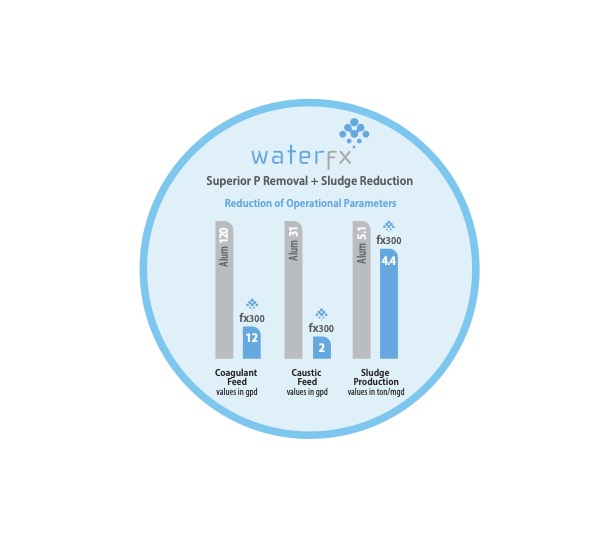Jordanelle Special Service District (JSSD), in Utah, found themselves in a position familiar to an increasing number of water recovery facilities – required to achieve extremely low phosphorus discharge limits. Their 0.06 mg/L (90-day average) Total Phosphorus (TP) limit is impossible to achieve through biological uptake alone, so they turned to chemical precipitation to remove the phosphorus from the wastewater received from their service communities. Like many facilities, they initially chose aluminum sulfate (alum) as their phosphorus coagulant.
Alum precipitation was operationally unpredictable with inconsistent compliance.
Throughout 2020 and into 2021, JSSD worked to achieve their TP limit but found that it was extremely difficult to predict if they were feeding an adequate amount of alum. When they thought they had zeroed in on the correct dosage, the effluent TP would spike, sending them out of compliance again. They were continually increasing the dosage of highly acidic alum, sometimes adding over 140 gpd to meet the needs of their 375,000 gpd average daily flow. Even at high dosages and with diligent monitoring, they would still be hit with the frequent TP spikes. The process never seemed to achieve a steady state.
High alum feed came with secondary operational consequences.
Alum, with a pH of approximately 2, consumes a great deal of alkalinity, and can easily compromise the biological processes, especially the nitrification process essential to treatment compliance. In order to maintain the alkalinity needed for nitrification and keep the pH within the permit limits, JSSD added 50 percent caustic. But as the alum dosage went up, so did the caustic dosage until they were feeding an average of 35 gpd.
Operationally, it was a delicate balancing act of adjusting the alum and then the caustic, combined with careful monitoring throughout the day, and hoping for the best.
Pilot testing with lanthanide-based Neo WaterFX 300 was a game changer.
JSSD contacted Neo Water Treatment and set up a pilot study that involved replacing the alum with Neo WaterFX 300. That pilot began in November of 2021, and yielded measurable benefits.
Within a month of making the switch to WaterFX 300, the TP levels stabilized at or below the discharge target. Even during the startup period, they achieved the discharge 90-day average of 0.06 mg/L TP. The dosage of WaterFX was fine-tuned and settled in at an average of approximately 12 gpd, roughly a tenth the average dosage required with alum.
Continuing through 2022, JSSD has maintained consistent, predictable, and reliable compliance with their TP limit, while making only minor adjustments to the Water FX dosage as needed.
Preserving alkalinity and almost eliminating caustic.
In addition to “set it and forget it” reliability for compliance, WaterFX has simplified operations by having a minimal impact on the alkalinity of the system. This is due two factors. First, the pH of WaterFX is between 3 and 4, or roughly 100 times less acidic than alum. When combined with the lower dosage, a tenth of that required using alum, the result is approximately 1000 times less acidity added to the process. The influent alkalinity is usually adequate to neutralize this slight acidity with alkalinity remaining for nitrification. Every now and then, a slight caustic feed is needed for pH adjustment but nowhere near the 35 (sometimes more) gpd required with alum.
The end result is that operations are simpler, the biological processes are much more stable and require less monitoring to achieve treatment objectives.
Net result, lower chemical costs.
When evaluating chemical costs, JSSD determined that they are going to save $24,900 per year just in the chemical costs. This includes the relative costs of alum versus WaterFX, as well as the lower caustic requirements. While the goal was to get and stay in compliance, saving money was a very welcome added bonus.
Want to learn more?
Lower chemical costs were just one of the benefits of switching from alum to Neo WaterFX 300. Next month, we will explore the second bottom line benefit – improved sludge processing and reduced disposal costs.
Click here to learn more about the pilot study, other benefits, and to see the data now.
Then contact us to see if it makes sense to try your own pilot test – on your wastewater, with your phosphorus influent levels and effluent limits. The consultation is free. We look forward to assisting you in achieving phosphorus compliance with benefits.



